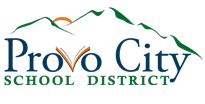Last modified: April 1, 2021
Kindergarten
Language Arts K
Description: In this course, students receive structured lessons on readiness skills through emphasis on phonics, language skills, literature, and handwriting to help develop comprehension, build vocabulary, and promote a lifelong interest in reading.
- Phonics: PhonicsWorks prepares students to become independent readers through systematic, multi sensory instruction in phonemic awareness and decoding skills, using a kit of magnetized letter tiles and a variety of games and activities.
- Literature and Comprehension: Plenty of read-aloud literature kindles the imagination while building comprehension and vocabulary. The emphasis is on classic literature—fairy tales, fables, and folktales—including many works that embody exemplary virtues.
- Language Skills: Traditional poems, nursery rhymes, and riddles help students develop comprehension, vocabulary, and a love of language. Offline vocabulary instruction is accompanied by online review and practice. All About Me lays the foundations of the writing process as students brainstorm, discuss, illustrate, write, and share ideas with others.
- Handwriting: Handwriting Without Tears provides gentle instruction to help students print letters correctly.
Materials required: Printed items (book, workbook, etc.)
Math+ K
This research-based course focuses on computational fluency, conceptual understanding, and problem-solving. The engaging course features new graphics, learning tools, and games; adaptive activities that help struggling students master concepts and skills before moving on; and more support for Learning Coaches to guide their students to success. The course introduces Kindergarten students to numbers through 30. Students learn through reading, writing, counting, comparing, ordering, adding, and subtracting. They experience problem solving and encounter early concepts in place value, time, length, weight, and capacity. They learn to gather and display simple data. Students also study two- and three-dimensional figures—they identify, sort, study patterns, and relate mathematical figures to objects within their environment.
Materials required: Math hands-on tools
Science K
Kindergarten students begin to develop observation skills as they learn about the five senses, the composition of the earth, and the basic needs of plants and animals. Students also explore topics such as measurement (size, height, length, weight, capacity, and temperature), matter (solid, liquid, and gas), the seasonal cycle, our earth (geography, taking care of the planet), motion (pushes and pulls, magnets), and astronomy (Earth, Sun, Moon, and stars; exploring space; astronauts Neil Armstrong and Sally Ride).
Materials required: Printed items (book, workbook, etc.) and science lab materials
History K
This beginning course teaches the basics of world geography through a storybook tour of the seven continents, and provides an introduction to American history and civics through a series of biographies of famous Americans. Supplementary lessons introduce students to symbols that represent American freedom; the laws, rights, and responsibilities of citizens; the cultures and traditions of the United States; and basic economic concepts.
Materials required: Printed items (book, workbook, etc.)
Art K
Students are introduced to the elements of art—line, shape, color, and more. They learn about portraits and landscapes, and realistic and abstract art. Students learn about important paintings, sculpture, and architecture; study the works and lives of artists such as Matisse, Miró, Rembrandt, Hiroshige, Cézanne, Picasso, and Faith Ringgold; and create artworks similar to works they learn about, using many materials and techniques. For example, students create brightly colored paintings inspired by Matisse and make mobiles inspired by Alexander Calder.
Materials required: Printed items (book, workbook, etc.) and art supplies
Spotlight on Music K
Explore and build foundational music skills with Spotlight on Music. This course offers a variety of learning activities that include singing, dancing, virtual instruments, listening maps, and authentic sound recordings. Music comes to life in the course through six units organized into three sections: Spotlight on Concepts, Spotlight on Music Reading, and Spotlight on Celebrations. Students learn about these musical elements: duration, pitch, design, tone color, expressive qualities, and cultural context. Students explore music from around the world while also examining beat, meter, rhythm, melody, harmony, texture, form, tone color, dynamics, tempo, style, and music background. Students also have the opportunity to perform seasonal and celebratory songs.
Materials required: Music supplies
Fitness and Health K
Young students begin to learn the basics about how their bodies grow and work. In this course they learn to keep their bodies healthy, access health help, and make healthy choices. Lessons cover physical health and hygiene, mental health and wellness, nutrition and physical activity, injury and violence prevention, and safety. Students participate in fitness activities in each lesson. Students will practice fundamental movement patterns like skipping, hopping, and leaping, and will have fun learning basic yoga poses and cooperative games. Students learn life skills like how to reduce stress, respect differences and work together.
